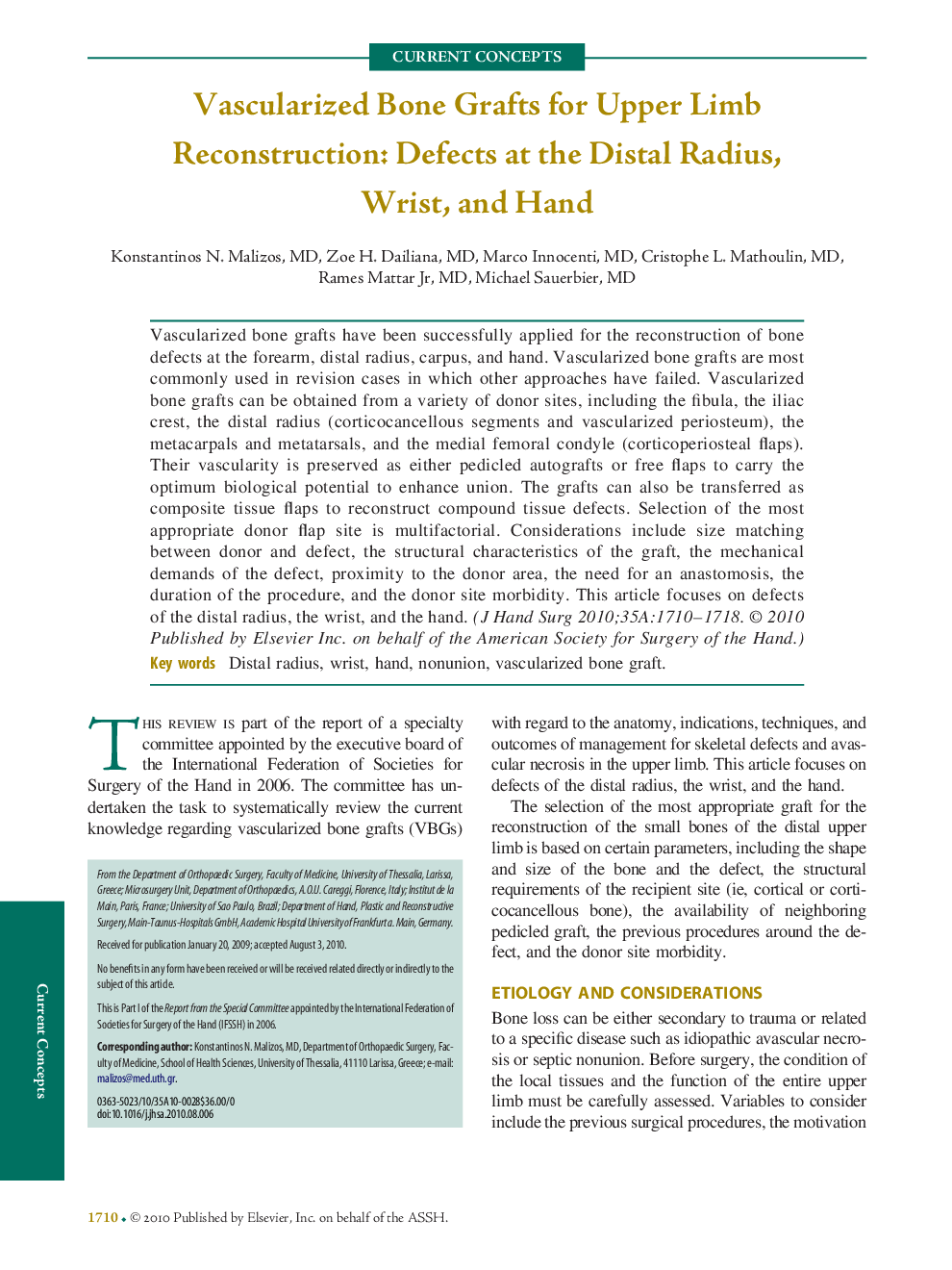| Article ID | Journal | Published Year | Pages | File Type |
|---|---|---|---|---|
| 4067516 | The Journal of Hand Surgery | 2010 | 9 Pages |
Vascularized bone grafts have been successfully applied for the reconstruction of bone defects at the forearm, distal radius, carpus, and hand. Vascularized bone grafts are most commonly used in revision cases in which other approaches have failed. Vascularized bone grafts can be obtained from a variety of donor sites, including the fibula, the iliac crest, the distal radius (corticocancellous segments and vascularized periosteum), the metacarpals and metatarsals, and the medial femoral condyle (corticoperiosteal flaps). Their vascularity is preserved as either pedicled autografts or free flaps to carry the optimum biological potential to enhance union. The grafts can also be transferred as composite tissue flaps to reconstruct compound tissue defects. Selection of the most appropriate donor flap site is multifactorial. Considerations include size matching between donor and defect, the structural characteristics of the graft, the mechanical demands of the defect, proximity to the donor area, the need for an anastomosis, the duration of the procedure, and the donor site morbidity. This article focuses on defects of the distal radius, the wrist, and the hand.
